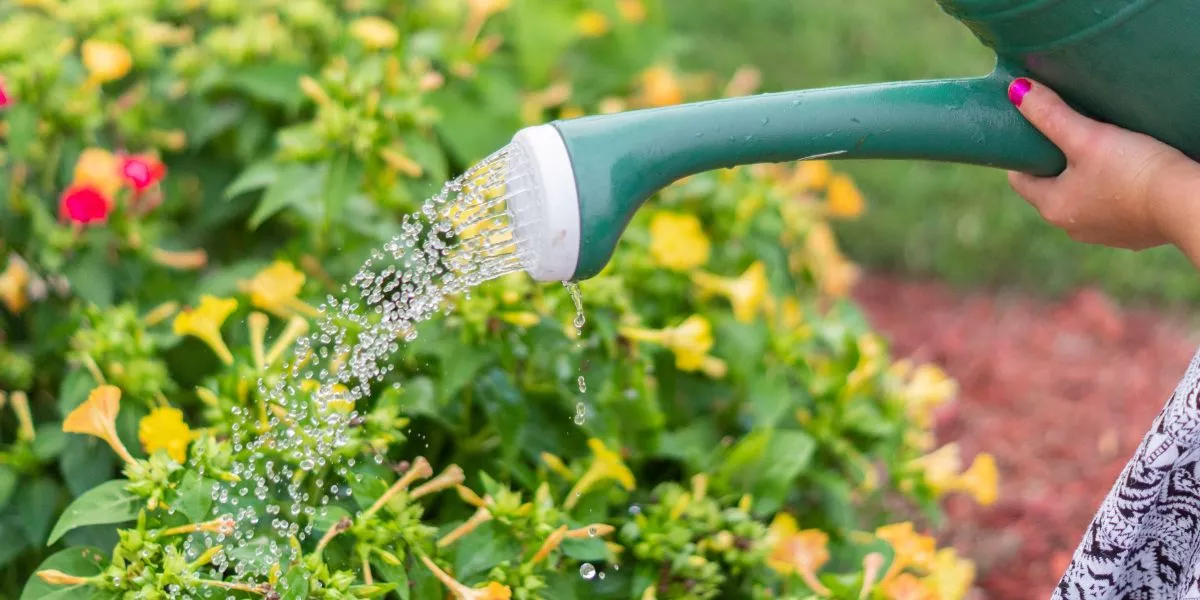
You should water your garden plants based on factors like soil type, weather conditions, plant size, species, and age. Different plants have unique water requirements, affected by factors like leaf texture and growth stage. Signs of underwatering include wilting, while overwatering can cause yellowing leaves or stunted growth. Seasonal changes impact watering needs, with spring and summer typically requiring more water. Efficient watering techniques like using soaker hoses and watering at specific times can help. Understanding these aspects will ensure your plants receive the right amount of water for optimal growth and health.
Factors Influencing Watering Frequency
Understanding the factors that influence watering frequency is crucial for maintaining healthy garden plants. One key factor to consider is the type of soil in your garden. Soil that drains quickly, like sandy soil, may require more frequent watering than soil with higher clay content, which retains moisture better.
Additionally, the weather plays a significant role. Hot and dry conditions will evaporate water faster, necessitating more frequent watering. On the other hand, cool and humid weather might mean you can water less often.
The size and type of plants in your garden also impact watering frequency. Larger plants with extensive root systems may need more water to reach all parts of the plant. Similarly, certain plant species have specific water requirements. Some plants, like succulents, thrive in drier conditions and shouldn't be overwatered.
Lastly, consider the age of your plants. Newly planted ones typically require more frequent watering until they establish themselves in the garden. By understanding these factors, you can tailor your watering schedule to meet the unique needs of your garden plants.
Understanding Plant Water Needs
Considering the specific water requirements of each plant in your garden is essential for determining the appropriate watering frequency. Different plants have varying needs when it comes to water, influenced by factors such as the plant species, soil type, weather conditions, and stage of growth. Plants like succulents require infrequent watering due to their ability to store water, while others like vegetables may need more consistent moisture. Understanding the individual preferences of your plants will help you avoid overwatering or underwatering, promoting healthier growth.
To determine the water needs of your plants, consider factors like leaf texture, soil moisture, and plant size. Plants with thick, waxy leaves generally require less water than those with thin, delicate leaves. Checking the soil moisture by feeling the top layer can indicate whether watering is necessary. Larger plants typically need more water to reach their extensive root systems.
Signs of Underwatering and Overwatering
To ensure your garden plants receive the right amount of water, it's important to recognize the signs of both underwatering and overwatering. When plants are underwatered, they may start to wilt, with leaves appearing droopy and lacking vitality. You might also notice that the soil is dry and pulling away from the edges of the container. In severe cases, the leaves could turn brown and crispy, and the plant may begin to shed leaves to conserve water.
On the other hand, overwatering can lead to equally detrimental effects. Plants that are getting too much water may exhibit signs such as yellowing leaves, mushy stems, or mold growing on the soil surface. The soil might also have a foul smell due to root rot caused by excessive moisture. Additionally, overwatered plants may show stunted growth as their roots suffocate in waterlogged conditions.
Seasonal Watering Guidelines
During different seasons, adjusting your watering schedule according to the specific needs of your garden plants is crucial for their health and growth.
In spring, as temperatures rise and plants begin active growth, you may need to increase watering frequency. Check the soil moisture regularly and water when the top inch feels dry.
Summer, with its scorching heat, often demands more frequent watering. Early mornings or evenings are the best times to water to prevent evaporation.
In fall, plants start preparing for dormancy, so you can gradually reduce watering. However, newly planted trees or shrubs may still need regular watering to establish their roots before winter.
Winter usually requires less watering, as most plants are dormant. Be cautious of overwatering during this time, as cold and wet conditions can promote root rot.
Efficient Watering Techniques
Adjust your watering techniques to maximize efficiency and ensure your garden plants receive the right amount of moisture. Start by watering your plants in the early morning or late afternoon to reduce water loss through evaporation. Direct the water towards the base of the plants to avoid wetting the foliage and potentially causing diseases. Consider using a soaker hose or drip irrigation system to deliver water directly to the roots, minimizing waste from runoff and evaporation.
Mulching around your plants helps retain soil moisture, reducing the frequency of watering needed. Organic mulches like bark chips or straw also improve soil structure and add nutrients as they break down. Grouping plants with similar water needs together allows you to water more efficiently, avoiding overwatering some while underwatering others.
Regularly check the soil moisture levels by sticking your finger into the soil. Water only when the top few inches are dry to prevent overwatering. Implementing these efficient watering techniques won't only conserve water but also promote healthier and more vibrant garden plants.




